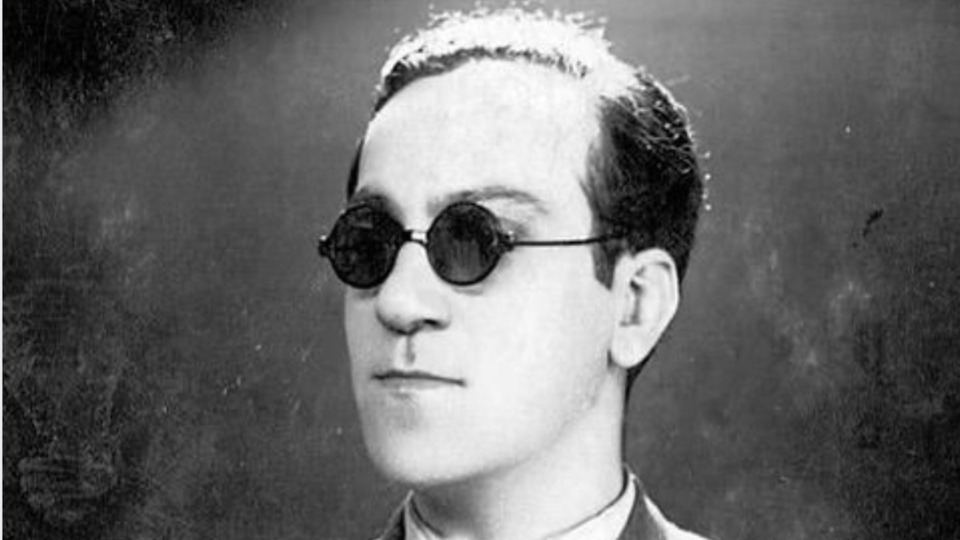
From the Facebook group, Notas de Oro
post by Sean Ericson ·
Carols Di Sarli - El Señor del Tango
Di Sarli (1903–1960) earned the nickname El Señor del Tango (“The Lord of Tango”), a title that reflected not only his elegant musical style but also his reserved, dignified stage presence. Often spotted behind a pair of dark glasses, Di Sarli cut a distinctive figure: a refined pianist, a successful orchestra leader, and a composer whose work remains essential in the traditional tango canon.
Born on January 7, 1903, in Bahía Blanca, southern Argentina, Di Sarli was christened Cayetano Di Sarli. His father, Miguel, was an Italian immigrant and owner of a local gun shop. His mother, Serafina Russomano, came from a family of musicians (her father Tito had been a tenor). Music ran through the family, with one brother becoming a music teacher, one a singer, and Roque, the youngest, a pianist like Carlos himself.
A pivotal moment came when Carlos, at age 13, lost an eye in a firearms accident at his father’s store. From that point on, he always wore dark-tinted glasses… part necessity, part mystique. It was a traumatic injury, but it didn’t derail his musical path.
Much to the dismay of his family and piano teacher, Di Sarli ran off with a zarzuela troupe to join the theatrical life on tour. In the years that followed, Di Sarli found work playing piano for silent films in La Pampa province before returning to Bahía Blanca. At just 16, he debuted as a band leader in a local café called Café Express. His group briefly toured the provinces, but in 1923, Carlos and Roque made the inevitable move to Buenos Aires.
Di Sarli worked with several orchestras, most notably playing for Osvaldo Fresedo, whose refined, urbane style left a permanent mark on Di Sarli’s musical vocabulary. In 1927 Carlos formed his own ensemble — a sextet that would, over time, lay the groundwork for his signature sound. He recorded extensively in the late 1920s and early ’30s, but after several interruptions and lineup changes, he temporarily stepped away from leading his own group.
In 1938 Di Sarli returned to Buenos Aires with renewed focus. He reorganized his orchestra and, in 1939, began recording again. He released one record in 1939: the song Corazón on the A-side and the instrumental piece Retirao on the B-side.
With “Corazón”, you can hear (and feel) D’Arienzo’s driving style that had influenced all tango artists in the 1930s. But in Roberto Rufino’s vocals and Di Sarli himself at the piano, Di Sarli’s unique style and elegance already shines through. A style that will allow Di Sarli’s career to climb to new heights, and a style whose influence on tango music and tango dance still reverberates today.
📷 How to recognize the music of Carlos Di Sarli:
- Bell-like piano accents: These “campanitas” often appear at phrase endings or transitions, adding shimmer and tension.
- Romantic string lines: The violins typically carry the melody, producing a lush, lyrical atmosphere.
- Slower, deliberate tempos: His tangos tend to feature two clear beats per bar.
- Tightly integrated arrastre: The dragging gesture in rhythm (especially in the bass) provides lift and flow for dancers.
- Bandoneón and violin unison: Rather than alternating solos, the instruments often carry the melody in close coordination.
- Few instrumental solos.
- Polished endings: typically with a full-orchestra hit followed by a high, crystalline resolution at the piano.
With “Corazón” ("Heart"), featuring Roberto Rufino’s vocals and Di Sarli himself at the piano, we can still feel the 1930s influence: it’s crisper and less expansive than his later work. Even so, Di Sarli’s unique style already shines through unmistakably.
“Corazón” from December 1939:
Lyrics
Corazón, me estás mintiendo…Corazón, ¿por qué lloras? No me ves que voy muriendo de esta pena a tu compás.
Si sabés que ya no es mía, que a otros brazos se entregó, no desmayes todavía, sé constante como yo.
Dame tu latido que yo quiero arrancar esta flor de olvido que ella ha prendido sobre mi mal.
Corazón, no la llames ni le implores—que de tus amores nunca has merecido tanta humillación.
Creo en Dios y la vida, con sus vueltas, sé que de rodillas la traerá a mis puertas a pedir perdón.
-----------------------------------
Heart, you are deceiving me… Heart, why are you crying? You don’t see that I’m dying to your rhythm, from this pain.
Though you know that she’s no longer mine, that she has surrendered to another’s arms, try not to faint yet, be as firm as I am.
Give me a strong beat because I want to uproot this flower of forgetting that she has tried to plant upon my sorrow.
Heart, don’t call to her don’t beg her for anything—you have never deserved so much humiliation from the ones you love.
I believe in God and in life, with all its twists and turns. I know that they will bring her on her knees to my door to beg for forgiveness.
Share this
 OfferingTree
OfferingTree